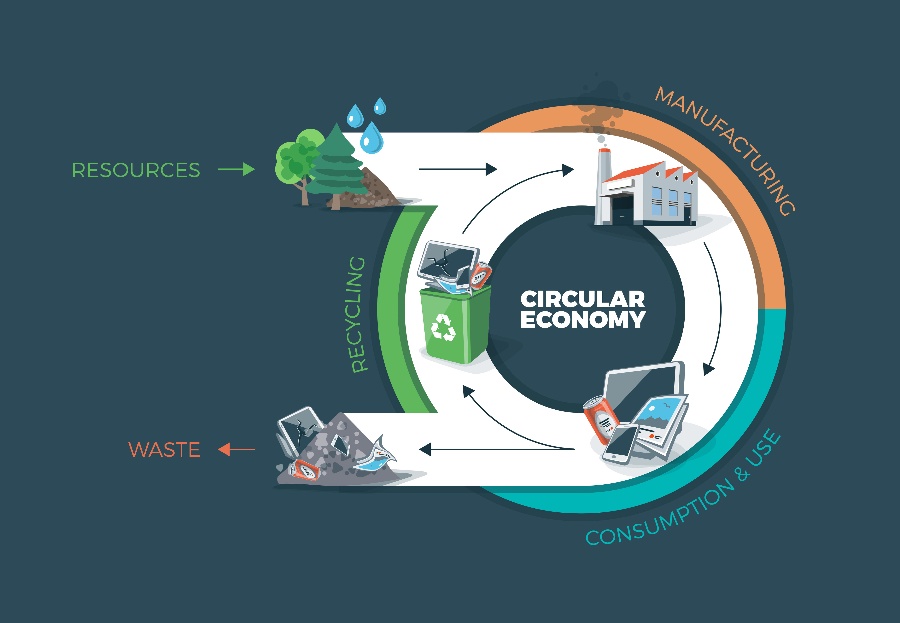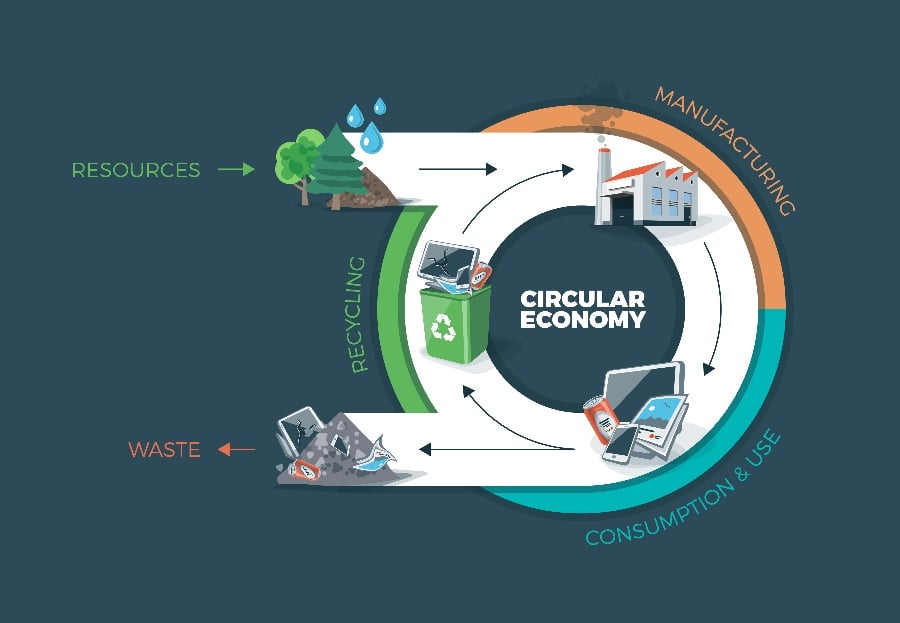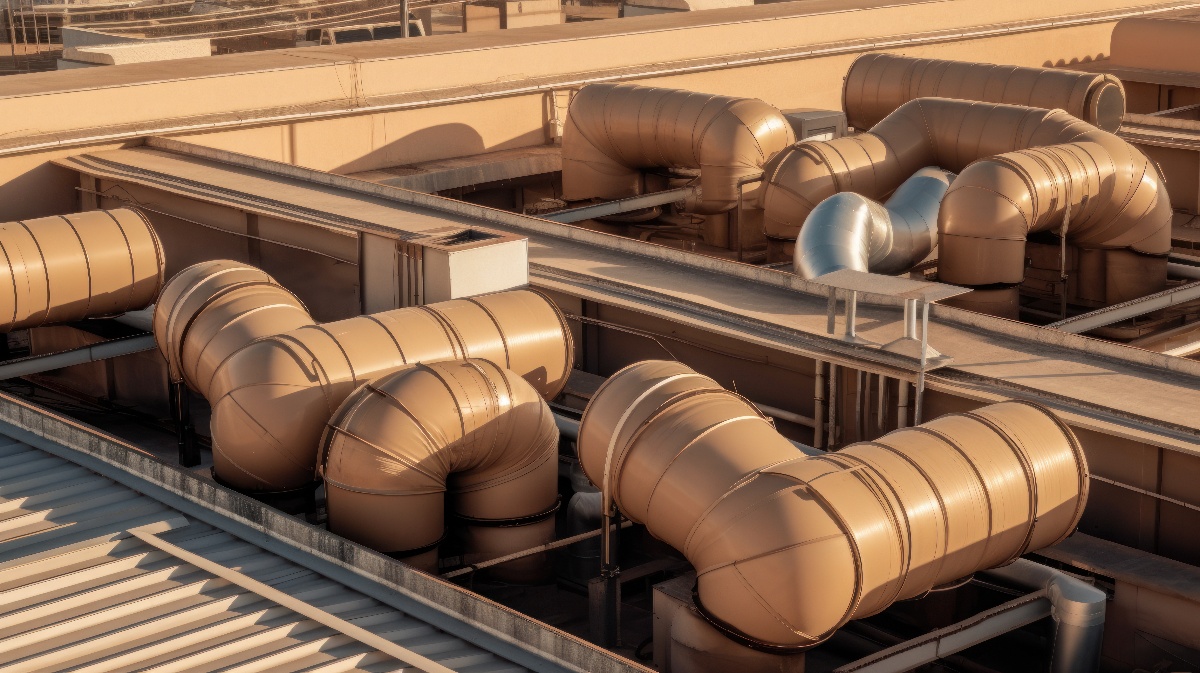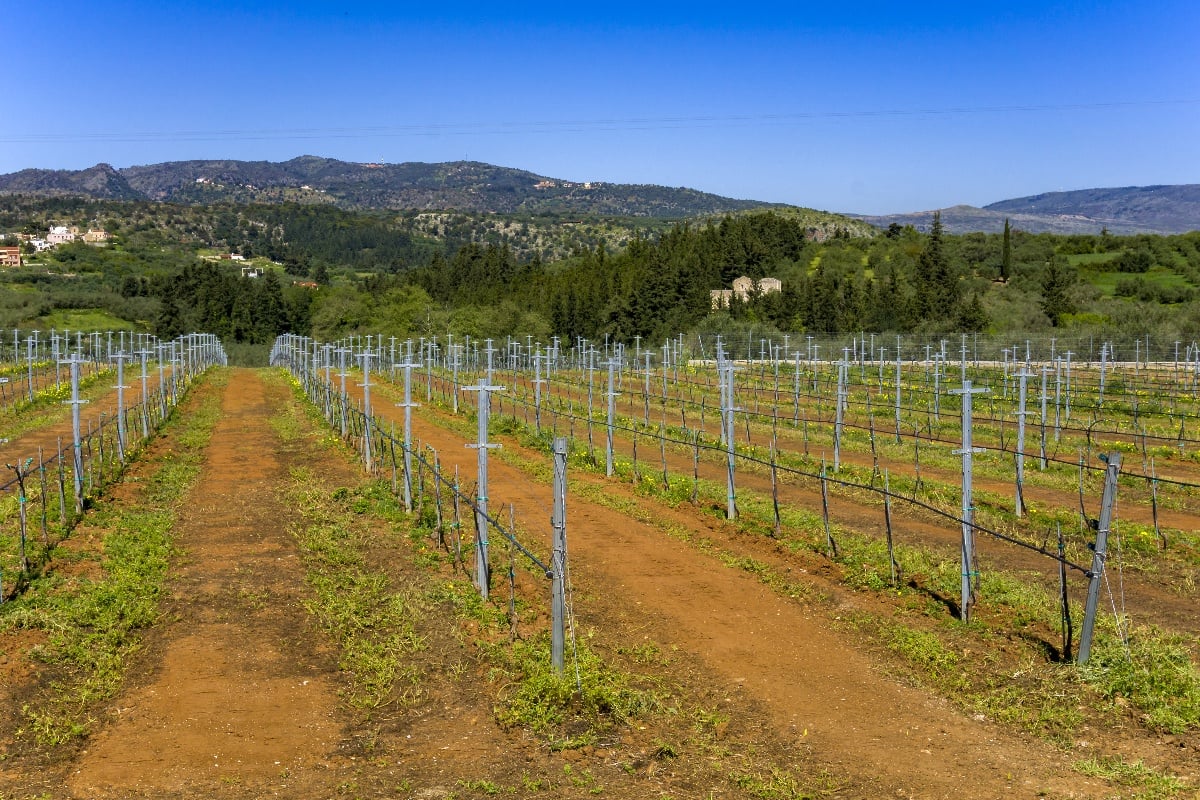
The circular economy has emerged as a transformative paradigm that seeks to address the environmental, economic, and social challenges posed by our current linear 'take-make-waste' model. At the heart of the circular economy lies the concept of waste reduction, recycling, and responsible resource management, which aims to maximize the value of materials and products throughout their lifecycle. In the manufacturing sector, this shift towards a circular approach is becoming increasingly crucial, as industries strive to minimize their environmental impact while meeting the growing demand for sustainable products.
One innovative material that has garnered significant attention for its potential to contribute to a circular economy is Fiberglass-Reinforced Plastic (FRP). This composite material combines the high strength, flexibility, and lightweight properties of fiberglass with the durability and versatility of plastic polymers, creating a unique and sustainable alternative to traditional materials such as steel, aluminum, and concrete.
FRP's exceptional characteristics not only make it suitable for a wide range of applications across various industries but also offer significant environmental benefits in terms of waste reduction, recycling, and energy efficiency.
In this article, we will delve into the principles of a circular economy in manufacturing, explore various waste reduction and recycling strategies, and highlight the potential role of Fiberglass-Reinforced Plastic in promoting a more sustainable future.
By understanding and embracing the potential of FRP and circular economy principles, manufacturers can reduce their environmental impact and foster a more resilient and sustainable manufacturing landscape.
Overview of Circular Economy Principles
Reduce
Designing for a circular economy in manufacturing involves various waste reduction and recycling strategies. One of the principles involved in a circular economy is to reduce the use of resources and inputs as much as possible. This entails designing products that use less material to achieve the same purpose or providing services that eliminate the need for ownership. Manufacturing companies can reduce waste by implementing a “closed loop system” where the materials used in production are reused again and again.
In doing so, resources are conserved, and the amount of waste generated is minimized. Companies that design with the reduce principle in mind can reduce their carbon footprint, cut their production costs, and enhance their sustainability efforts.
Reuse
Another crucial principle in the circular economy is to reuse. This principle entails finding innovative ways to extend the life of products and components, promoting a circular flow of energy, materials, and resources. Manufacturing companies can reuse parts and refurbish products to avoid premature disposal. It means reducing the need for extracting new resources and limiting waste creation. Reusing products instead of throwing them away contributes to a more sustainable economy. Not only does it reduce the environmental impact of disposal, but it also reduces costs associated with production and waste management.
Recycling
Recycling is an important principle of the circular economy that aims at producing new products from waste. When products reach the end of their use, recycling helps to prolong their lifespan by creating new products out of the materials that make them up. This recycling process can help to reduce the depletion of natural resources, minimize waste to landfill, and cut down greenhouse gas emissions. Recycling plays a critical role in designing for a circular economy in manufacturing. Companies can recycle materials such as plastics, metals, and paper into new products, thus reducing their consumption of virgin raw materials.
Recovery
The recovery principle of the circular economy aims to recover remaining value from products and materials that cannot be directly recycled or reused. For example, bio-waste can be recovered and used for energy production. Recovery offers economic and environmental benefits by reducing the environmental impact of disposal while creating value from products and materials that would otherwise be wasted. This principle encourages the use of waste as a resource for creating new products or for generating energy.
Rethinking
Rethinking designs from an end-to-end perspective is the principle that underpins circular economy. It entails considering the whole process, designing products for repair, repurposing, and upgrading to reduce their environmental impact. This principle helps to create a system that maximizes value and minimizes waste. Companies can rethink their manufacturing processes, designs, and operations to identify opportunities to achieve a circular flow of resources, leading to more sustainable production practices. Rethinking is an essential aspect of the circular economy that focuses on creating sustainable designs that are durable, repairable, and recyclable.
Waste reduction strategies
Lean Manufacturing
Lean manufacturing is a production philosophy that focuses on minimizing waste while maximizing productivity. Waste reduction involves identifying the sources of waste in the manufacturing process, such as overproduction, excess inventory, and inefficient use of resources. By streamlining processes, implementing continuous improvement, and using data-driven decision-making, manufacturers can eliminate or minimize waste, resulting in a more efficient and sustainable production process.
Embracing lean manufacturing principles can lead to numerous benefits, including reduced waste, lower production costs, improved product quality, and increased customer satisfaction. By minimizing waste, manufacturers can decrease their environmental impact and contribute to a circular economy. Furthermore, lean manufacturing can enhance a company's competitiveness by reducing lead times, increasing productivity, and optimizing resource utilization.
Resource-efficient Design
Selecting materials with lower environmental impact is crucial for waste reduction and resource efficiency. Manufacturers should consider factors such as material recyclability, biodegradability, and the embodied energy in the production process. Additionally, incorporating recycled or renewable materials can significantly reduce the ecological footprint of a product while preserving natural resources.
Designing products that last longer can significantly reduce waste and contribute to a circular economy. Manufacturers can achieve product life extension by focusing on durability, modularity, and ease of maintenance. By creating products that are designed for repair, upgrade, or remanufacture, companies can help reduce waste generation and extend the useful life of their products, ultimately promoting sustainability.
Energy and Water Efficiency
Adopting energy-efficient technologies in the manufacturing process can reduce waste and minimize the overall environmental impact. Some examples of energy-saving technologies include the use of energy-efficient equipment, waste heat recovery systems, and renewable energy sources, such as solar or wind power. Implementing these technologies not only reduces energy consumption but also lowers greenhouse gas emissions and operational costs.
Water is a vital resource in many manufacturing processes, and its efficient use is essential for promoting a circular economy. Manufacturers can implement water-conservation measures such as water recycling and reuse systems, rainwater harvesting, and wastewater treatment. These practices not only help reduce the consumption of freshwater resources but also minimize wastewater discharge and the associated environmental impact.
Fiberglass-Reinforced Plastic as a Sustainable Solution
Overview and Properties of FRP
Fiberglass-Reinforced Plastic is a composite material that combines the strength and flexibility of fiberglass with the resilience and adaptability of plastic polymers. This unique combination results in a material with exceptional mechanical and chemical properties, making it an attractive choice for a wide range of applications across various industries.
FRP is lightweight, corrosion-resistant, and provides high tensile strength, making it a versatile and durable alternative to traditional materials such as steel, aluminum, and concrete.
Environmental benefits of FRP
Longevity and Durability
One of the key environmental benefits of FRP is its impressive longevity and durability. The material's resistance to corrosion, weathering, and chemical exposure ensures that it maintains its structural integrity and performance over a longer period than many traditional materials.
This extended lifespan reduces the need for frequent replacements and the associated environmental impacts of manufacturing and disposal, ultimately contributing to a more sustainable manufacturing cycle.
Low Maintenance Requirements
FRP requires minimal maintenance due to its inherent corrosion resistance and weather-resistant properties. This results in reduced costs and environmental impact associated with maintenance activities, such as painting, sealing, and repairs. Furthermore, the lower maintenance requirements reduce the use of harmful chemicals and materials, contributing to a cleaner environment.
Energy Efficiency
The lightweight nature of FRP translates to reduced energy consumption during transportation and installation. Additionally, FRP exhibits excellent thermal insulation properties, which can contribute to energy savings in applications where temperature regulation is important, such as building construction and industrial equipment.
Recycling strategies
Closed-loop recycling
Definition and Benefits
Closed-loop recycling refers to the process of collecting, processing, and reusing materials from end-of-life products to create new products of the same type, thus forming a closed loop. The benefits of closed-loop recycling include reduced waste generation, decreased reliance on virgin materials, lower energy consumption, and minimized environmental impact. Moreover, it helps conserve resources, supports a circular economy, and reduces the costs associated with waste disposal.
Examples of Successful Closed-loop Systems
Aluminum cans: Aluminum is infinitely recyclable without losing its quality, making it an ideal candidate for closed-loop recycling. Used aluminum cans can be recycled and returned to the store shelves as new cans within 60 days.
PET bottles: Closed-loop recycling systems convert discarded bottles into new ones, reducing demand for virgin materials and decreasing plastic waste.
Open-loop recycling
Definition and Benefits
Open-loop recycling, also known as downcycling, is the process of converting waste materials from one product into a new product of a different type or lower quality. Although open-loop recycling may not achieve the same level of resource conservation as closed-loop recycling, it still offers benefits such as reduced waste generation, lower environmental impact, and the potential to generate revenue from waste materials.
Examples of Successful Open-loop Systems
Paper recycling: Waste paper can be processed and converted into various products, such as tissue paper, packaging materials, or insulation, which might be of lower quality than the original product.
Construction and demolition waste: Materials from construction and demolition sites can be repurposed as aggregate for road construction or as raw materials for new construction projects, diverting significant waste from landfills.
Design for Disassembly
Principles and Benefits
Design for disassembly (DfD) is an approach to product design that considers the ease of disassembly and recycling at the end of a product's life. By incorporating modularity, standardized components, and easy-to-separate connections, DfD enables more efficient recycling and recovery of materials. The benefits of DfD include reduced waste generation, extended product life, and improved resource recovery, which contribute to a circular economy.
Case Studies
Fairphone: Fairphone is a smartphone designed with modularity and repairability in mind, allowing users to replace individual components as needed. The phone's design enables easier disassembly and recycling, reducing electronic waste and supporting a circular economy.
Herman Miller's Aeron Chair: The Aeron Chair by Herman Miller is an example of a product designed for disassembly. The chair's components are easy to separate and made from recyclable materials, facilitating recycling and recovery at the end of the product's life.
Recycling and waste reduction potential of FRP
Recycling processes for FRP
Although FRP recycling is still a developing field, several promising technologies are being explored to improve the recycling process. These methods include mechanical grinding, thermal processing, and chemical treatment. As these technologies mature, they have the potential to recover valuable raw materials from FRP waste, further enhancing the material's circularity and reducing its environmental footprint.
Potential Applications of Recycled FRP Materials
Recycled FRP can be utilized in various applications, including the production of new composite materials, as a filler or reinforcement in concrete, or as an aggregate in road construction. By incorporating recycled FRP into new products, manufacturers can significantly reduce the demand for virgin materials, thereby minimizing the environmental impact of their operations.
Industry Initiatives for FRP Recycling
As the demand for FRP and its applications continues to grow, industry stakeholders are recognizing the importance of developing sustainable end-of-life solutions. Several initiatives, such as the European GRP Recycling Service, are working to establish recycling networks and promote the use of recycled FRP materials. These efforts will help to ensure that FRP remains a viable and environmentally responsible material choice for the future.
By adopting Fiberglass-Reinforced Plastic as a material for manufacturing, companies can reap its outstanding properties while minimizing waste and promoting circularity in their processes. As recycling technologies advance and the market for recycled FRP materials expands, FRP's role in sustainable manufacturing will continue to strengthen, making it an ideal choice for industries committed to embracing the circular economy.
The transition to a circular economy in manufacturing is not only a pressing necessity but also an opportunity for industries to adopt innovative materials, processes, and strategies that promote sustainability and resilience. Fiberglass-Reinforced Plastic stands out as a prime example of such an innovative material, offering a unique combination of properties that make it a versatile, durable, and environmentally responsible choice for numerous applications.
The benefits of FRP, such as its longevity, low maintenance requirements, and energy efficiency, position it as an ideal material for advancing the circular economy in manufacturing. Moreover, the ongoing development of recycling processes and market opportunities for recycled FRP materials further underscores its potential to reduce waste and optimize resources.
However, the successful integration of FRP and circular economy principles in manufacturing requires collaboration, innovation, and commitment from all stakeholders, including policymakers, industry leaders, researchers, and consumers. By fostering a shared vision and working together to overcome technical, regulatory, and market challenges, we can ensure that Fiberglass-Reinforced Plastic and other sustainable materials play a central role in the transition toward a more circular and environmentally responsible manufacturing landscape.
Ultimately, the circular economy in manufacturing is a journey of continuous improvement and learning. Embracing this journey and harnessing the potential of innovative materials, such as FRP, will not only benefit the environment but also create new opportunities for growth, competitiveness, and long-term resilience in the manufacturing sector. The time to act is now – let us embrace the circular economy and work together to create a more sustainable and prosperous future for all.















